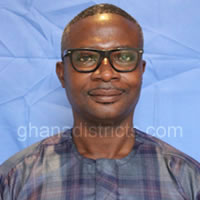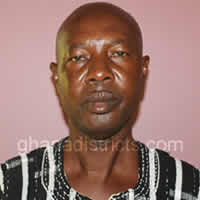DISABILITY
Introduction
The Ghana Statistical Service (2010) defined persons with disability as those who were unable to or restricted in the performance of specific tasks/activities due to loss of function of some part of the body as a results of malformation. Persons with disability are often regarded less productive and not capable of contributing to development compared to their non-disabled counterparts.
People With Disabilities (PWDs) face a wide range of life challenges, disabilities no matter what form or type can limit an individual’s ability to function to his or her full potential. Despite various summits and conventions, people with disabilities have continued to experience a variety of barriers that their full and effective participation in society on an equal basis with persons without disability.
In Ghana, steps have been taken including the establishment of the Disability Fund to ensure the full potentials of people with disabilities for the development of the country.
With appropriate and well meaningfully implemented policies that are disability friendly; people with disabilities can live a meaningful and dignified life in the Builsa South District contributing positively to the development of the district. The objective of this chapter is to analyse the data on persons with disability using the 2010 Population and Housing Census data.
Population with Disability
Table 6.1 shows that, out of the total number of 36,514, there were 1,104 persons with various form of disability constituting 3.0 percent of the population in the district. However, the proportions of the people with disability vary marginally between males and females. The disabled male population constitutes 2.9 percent as compared with 3.1 percent of the females in the district.
Type of Disability
Table 6.1 shows the types of disabilities in the Builsa South District during the 2010 Population and Housing Census by sex and locality. Out of the total of 36,514 population, 3.0 percent persons are with disability in the district. This is however below the regional figure 3.8 percent.
The table provides the percentage of disabled persons who were affected by the various types of disabilities. The prevalence of sight disability is the highest (39.2%) followed by hearing disability (21.7%), physical (20.0%), and emotional disability (15.8%), speech disability (12.7%) and finally intellectual disability (10.1%).
Distribution by Type of Locality
Table 6.1 presents the number and percentage of disabled persons by type of locality. Out of the total number of 36,514 of the entire population of the district, those with the various kind of disability are 1,104 of the population representing 3.0 percent.
Disability and Activity
Table 6.2 present distribution of population aged 15 years and older with disability by economic activity status and sex. There are 929 persons 15 years and older with disability in the district which represent 4.3 percent. Employed persons aged 15 years and older with disability constitute 47.2 percent, 1.8 percent are unemployed and economically not active constitutes 50.2 percent of the disabled population in the district.
The type of disability that an individual has can affect his/her likelihood of participating in the labour market. People with emotional disorder has the highest number of persons employed (61.1%) percent, followed by speech (53.8%) then hearing (49.2%) and physical (36.9%) disorder.
The proportion of the employed males with disabilities (55.1%) is higher than that of the females (40.4%) with disabilities in the various sectors of the economy. However, among those who are economically not active, the proportion of females with disabilities (57.6) is higher than that of their male counterparts (43.3%).
Disability, Education and Literacy
Table 6.3 presents information on population aged 3 years and older by disability type and level of education. About three percent of the 33,520 respondents have various types of disabilities. Out of the total population of 1,066 persons with disability, 76.0 percent have never attended school, 13.1 percent are in the primary school, and 0.3 percent in SSS/SHS with none having a bachelor degree.
Of those with sight impairment, 85.7 percent never attended school, 9.8 percent are in the primary, 0.2 percent attended post-secondary and 0.5 percent of those who attended the Post graduate (Cert. Diploma Masters PHD) are in the sight impairment class. A higher proportion of persons with disability have primary school education (13.1%) in the district.
Date Created : 11/20/2017 5:59:29 AM





 facebook
facebook twitter
twitter Youtube
Youtube TOLL FREE 0800 430 430
TOLL FREE 0800 430 430 +233 593 831 280
+233 593 831 280 GPS: GE-231-4383
GPS: GE-231-4383 info@ghanadistricts.com
info@ghanadistricts.com Box GP1044, Accra, Ghana
Box GP1044, Accra, Ghana